Bees, hornets, and wasps can cause problems when they build their colonies in or around your property. Some people have severe allergic reactions to bee stings, and others find their presence alarming. Pennsylvania is home to many types of bees and wasps. The most common wasps are yellowjackets and northern paper wasps, and the most common bees are honey bees, bumble bees, and carpenter bees.
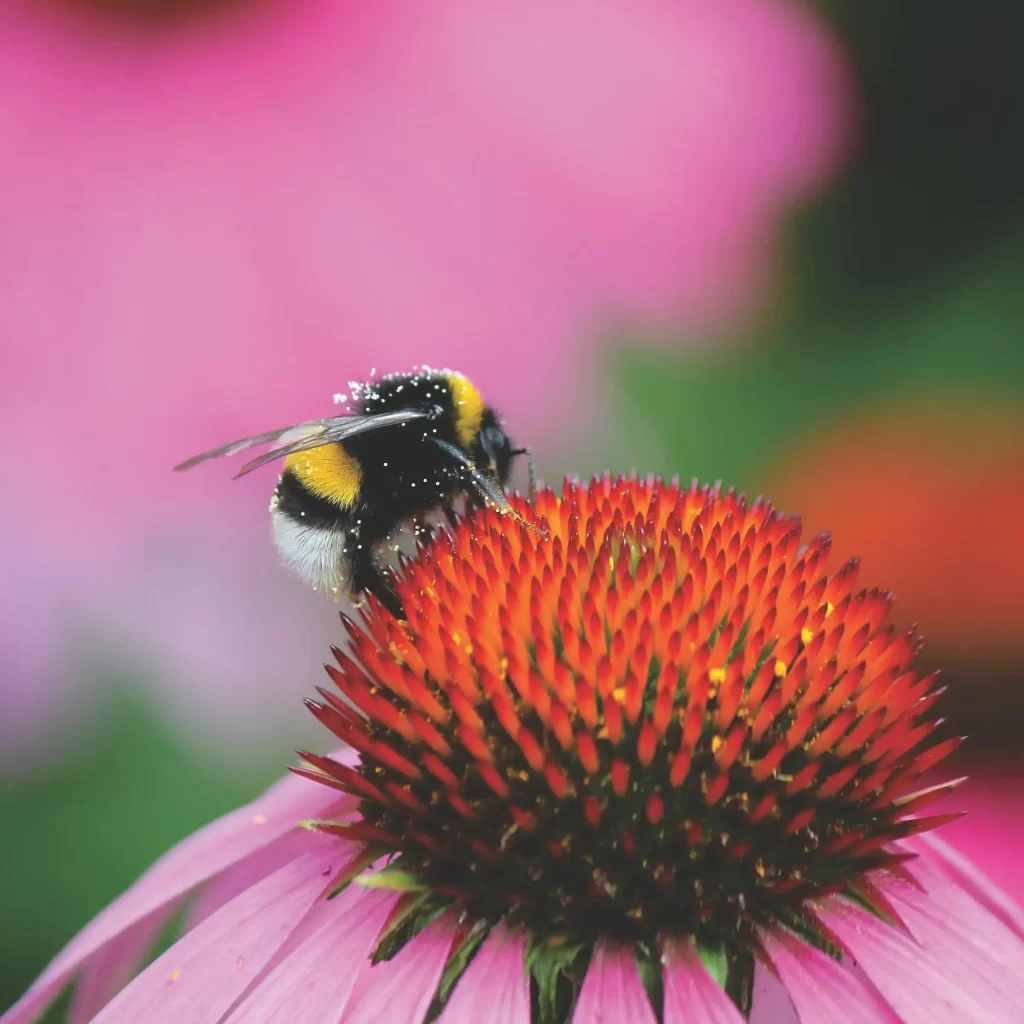
| Bumble Bees | |
| Appearance | Bumble bees are broad, fuzzy bugs with black and yellow/orange stripes. They have small wings. |
| Length | ½” to 1” |
| Where You Can Find Them Inside | Bumble bees like to live in holes that are well-hidden. They often use abandoned rodent holes, hay bales, or other concealed spots. |
| Food Sources | Pollen and nectar |
| Extra Facts | Bumble bees are docile insects. Female bumble bees can sting several times, but they rarely do. Bumble bees pollinate through “buzz pollination.” They buzz their wings and shake pollen loose. |
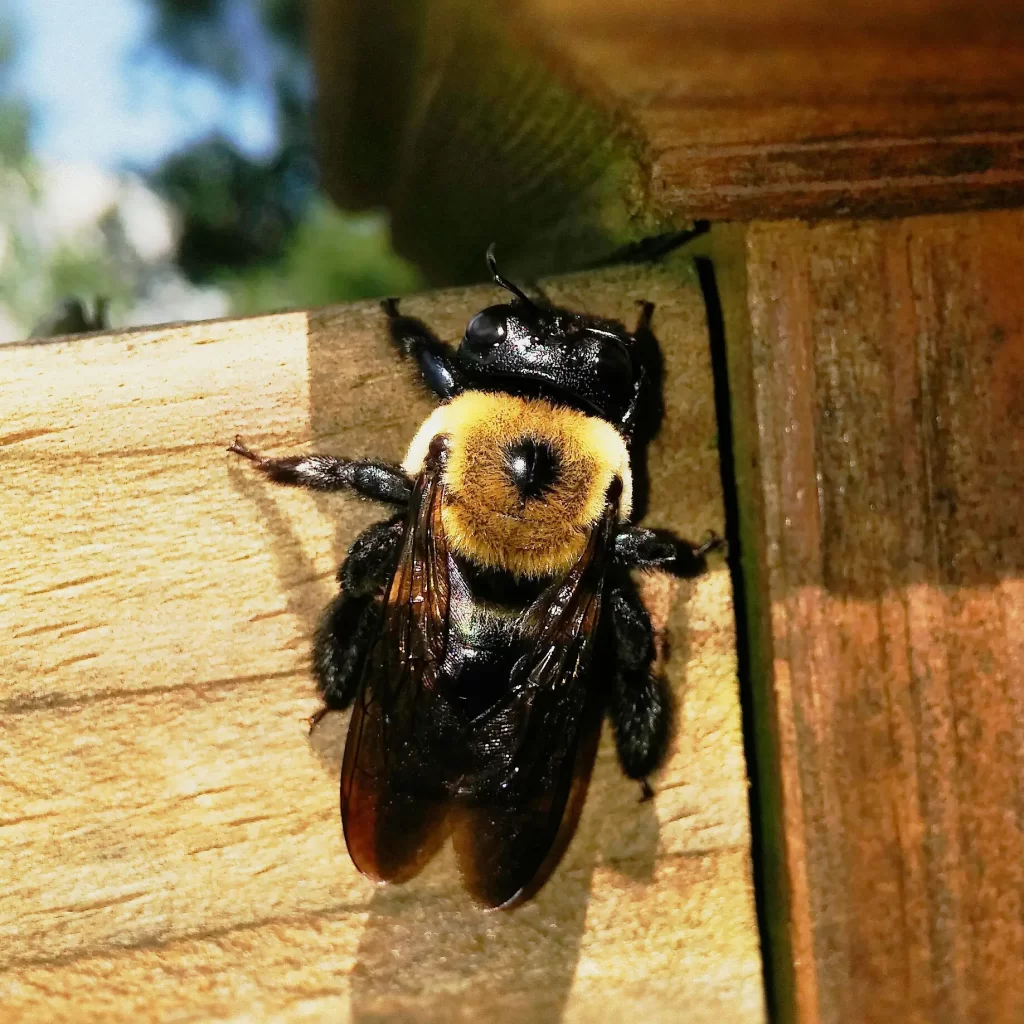
| Carpenter Bees | |
| Appearance | Carpenter bees look similar to bumble bees. They do, however, have hairless, shiny black abdomens whereas bumble bees are hairy all over. |
| Length | ¾” to 1” |
| Where You Can Find Them Inside | Carpenter bees are attracted to unpainted wooden objects. They’ll build tunnels in roof eaves, doors, windowsills, telephone poles, and even wooden furniture. |
| Food Sources | Nectar |
| Extra Facts | Carpenter bees do not eat wood. They merely excavate it to create tunnels for them and their young. They are more active in the daytime. Female carpenter bees can sting but are only likely to if they’ve been handled. Carpenter bees prefer wooden objects that are 2 inches or thicker. |
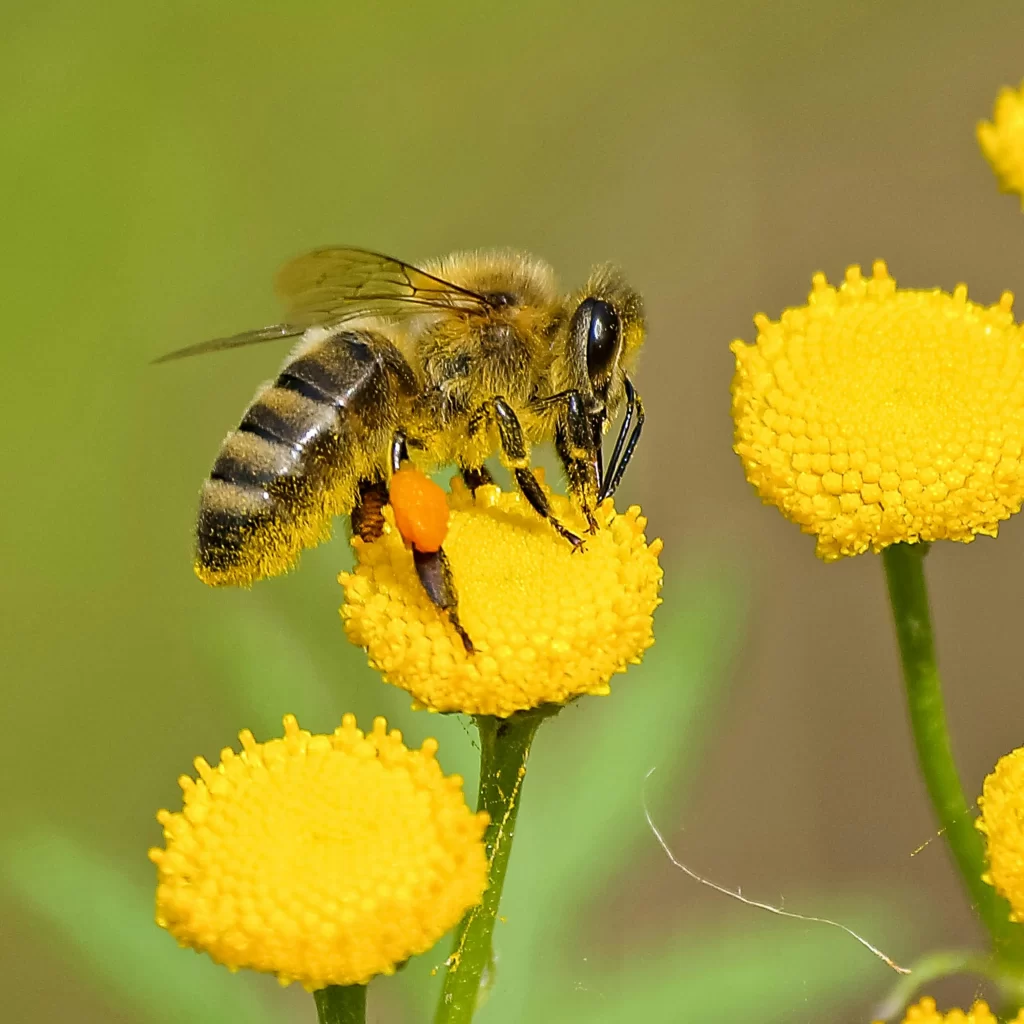
| Honey Bees | |
| Appearance | Honey bees are small with brown heads and alternating bands of brown and gold on their abdomens. They have wings, antennae and a stinger. |
| Length | Depending on the gender, honey bees can range from ½” to 1” in size. |
| Where You Can Find Them Inside | Honey bees like to build their combs in enclosed spaces. In houses, this is often within the walls. |
| Food Sources | Pollen, nectar, and honey |
| Extra Facts | A new honey bee colony will favor spots formerly inhabited by honey bees. If you’re removing a honey bee colony from your home, it’s important to get rid of all comb and honey left over to prevent a new colony from moving in. Large colonies can form inside of homes. There could be thousands of bees and over 100 pounds of honey. Honey bees can sting one time and will die after stinging. Their sting releases a pheromone to attract more bees to help defend their nest. |
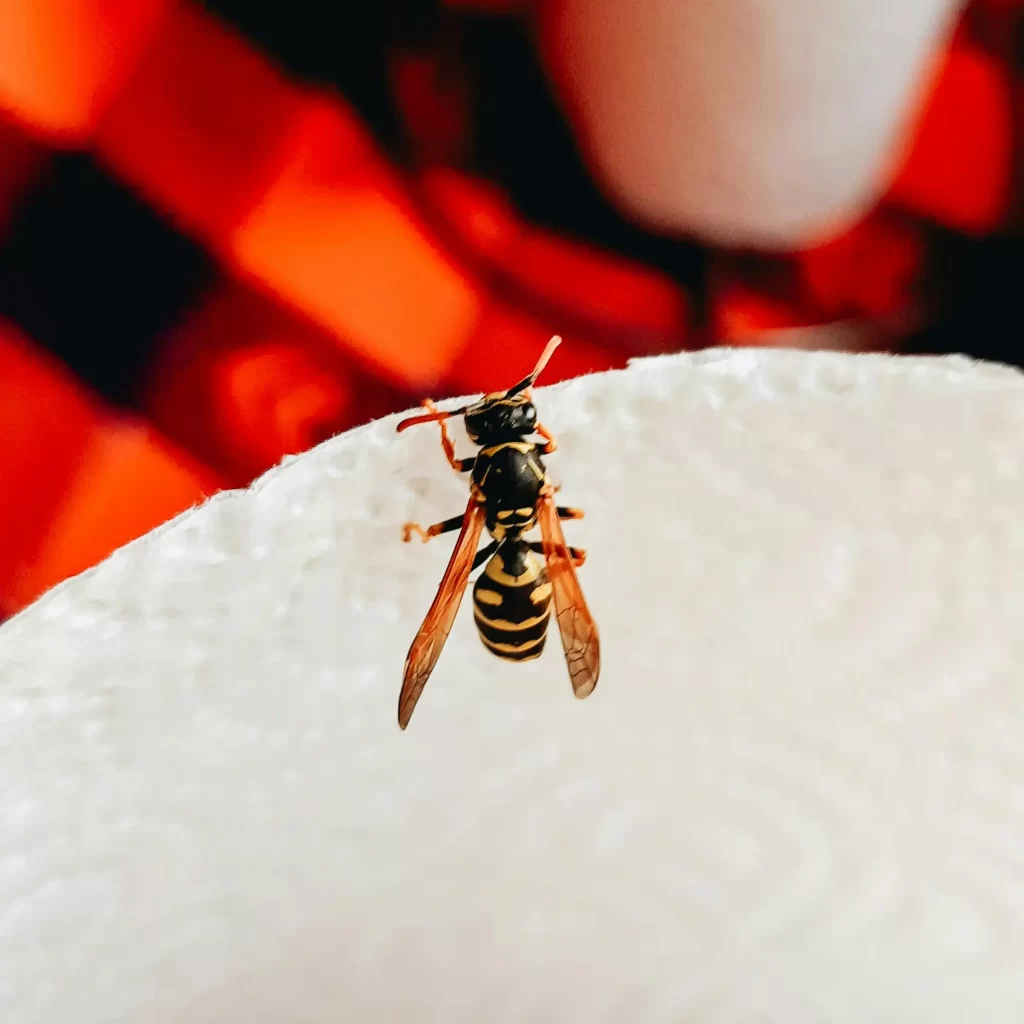
| Paper Wasps | |
| Appearance | Paper wasps are black with yellow and black striping. They have narrow “waists” between their thoraxes and abdomens. They are hairless and have wings. |
| Length | ~3/4” |
| Where You Can Find Them Inside | Wasps will typically build their nests on eaves and overhangs. |
| Food Sources | Nectar, honeydew, caterpillars, web worms |
| Extra Facts | Northern paper wasps, bald-faced hornets (which are typically black & white), and European hornets are all types of paper wasps. They’re called paper wasps because they build their nests with a wood pulp that resembles paper. They can be aggressive and deliver multiple stings when defending their nests. |
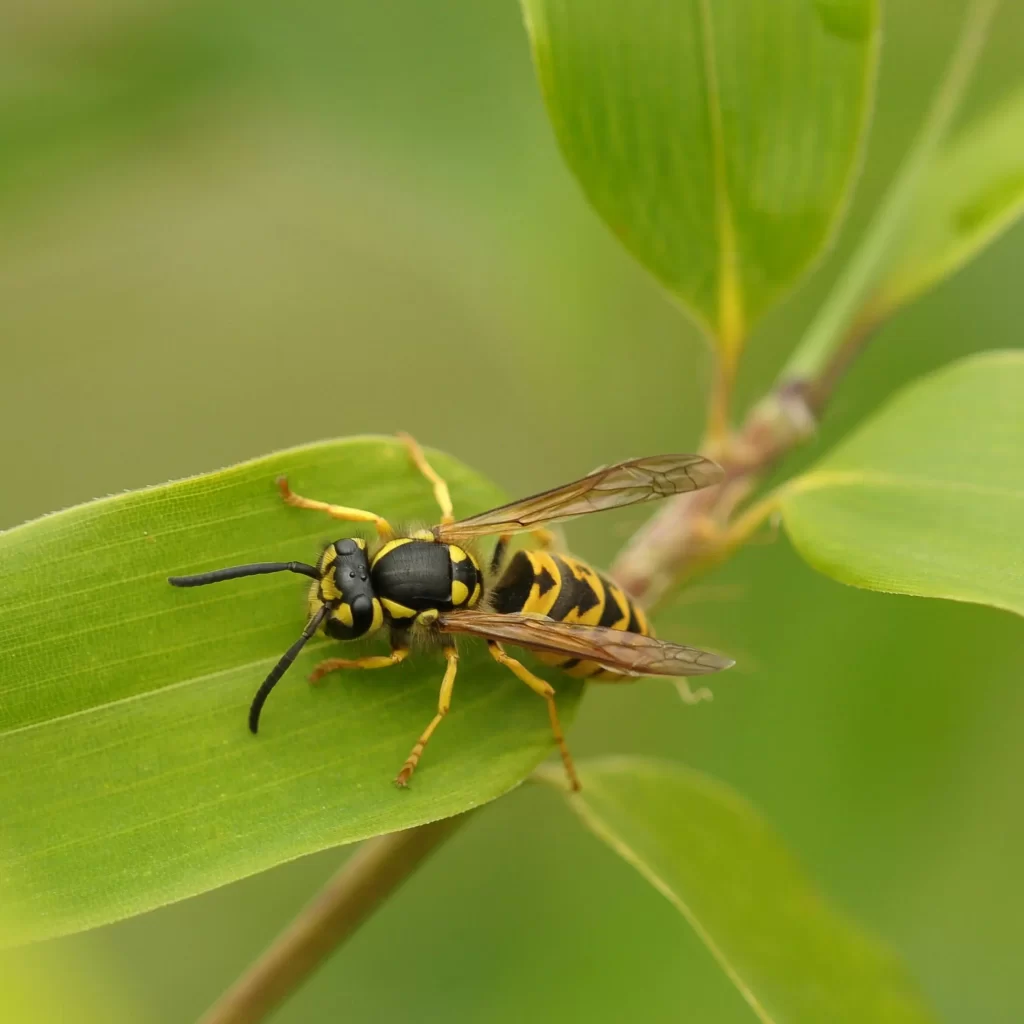
| Yellowjackets | |
| Appearance | Yellowjackets have yellow and black heads with a patterned abdomen. They are slim and hairless with wings. |
| Length | 3/8” to 5/8” |
| Where You Can Find Them Inside | Yellowjackets will typically build nests underground near the base of buildings or in the cracks of pavement. |
| Food Sources | Aphids, caterpillars, flies |
| Extra Facts | Yellowjackets are also a type of wasp. Some species of yellowjacket can be aggressive and defensive while others are more docile. They can sting multiple times. |
Complaints
Bees and wasps can sting humans and pets when provoked, though some issue worse stings than others. Carpenter bees can cause structural damage. Bees have also been known to cause severe allergic reactions in some people.
Solutions
The solution to handling bees and wasps will vary depending on the type of bee or wasp on your property. Bumble bee and honey bee colonies can be relocated if the queen is moved. All bee and wasp colonies can be exterminated through the use of pesticides. You can prevent bees and wasps from nesting in and on your building by sealing cracks, treating wood, and keeping plants away from your home.
If you have a bee or wasp problem, call Wildlife Enterprises, LLC. We can safely remove the insects from your property and help you set up for success in keeping them away. Call us today to get started.
Dan Lynch is a Certified Commercial Pesticide Applicator with licensing from the Pennsylvania Department of Agriculture. His permitted categories include household and health related pests, wood destroying pests, and public health vertebrate and invertebrate pests.
